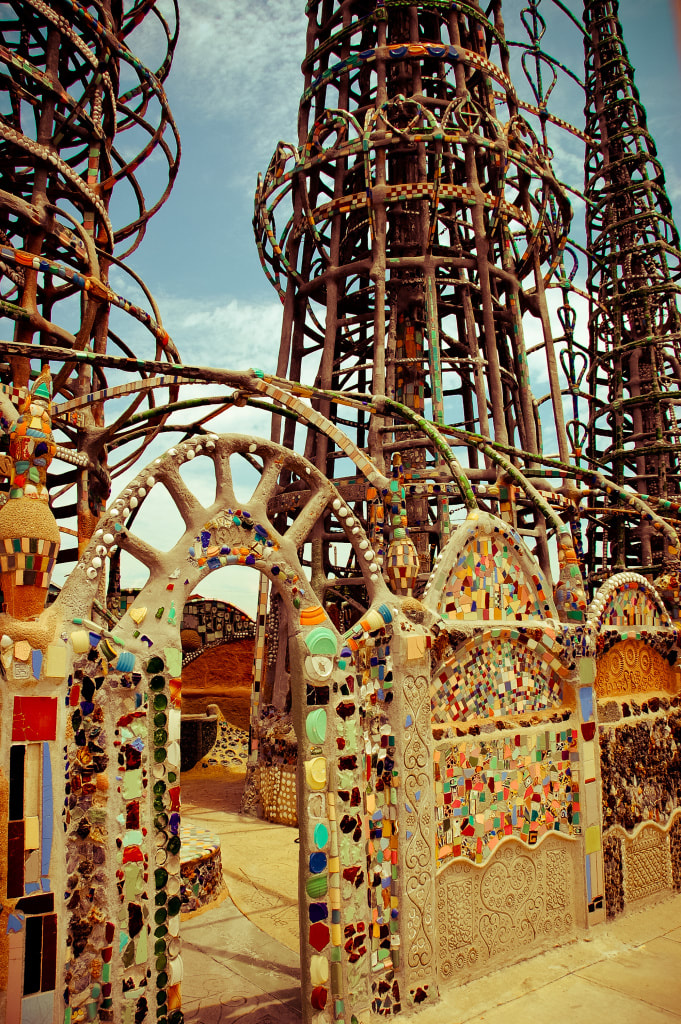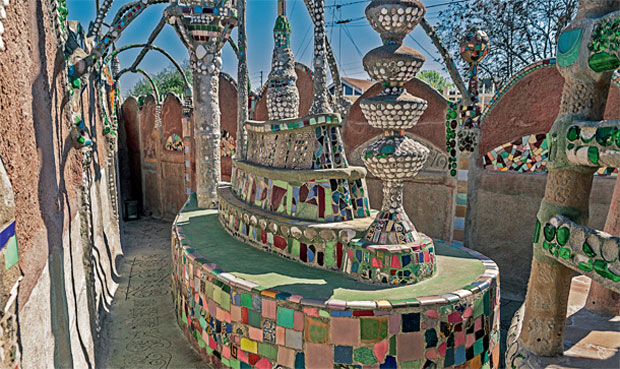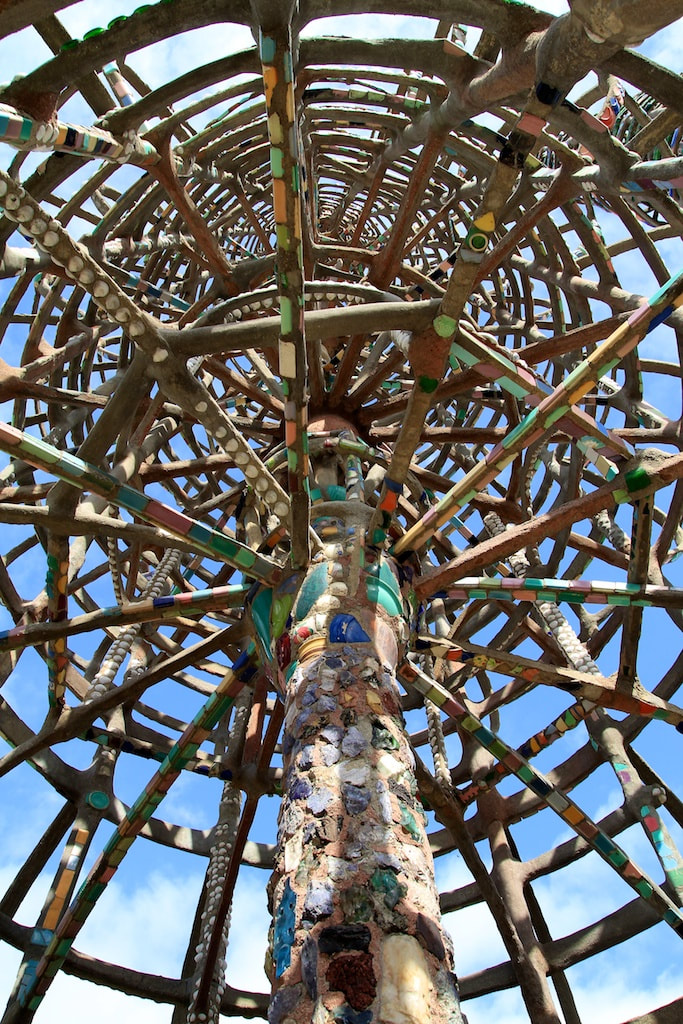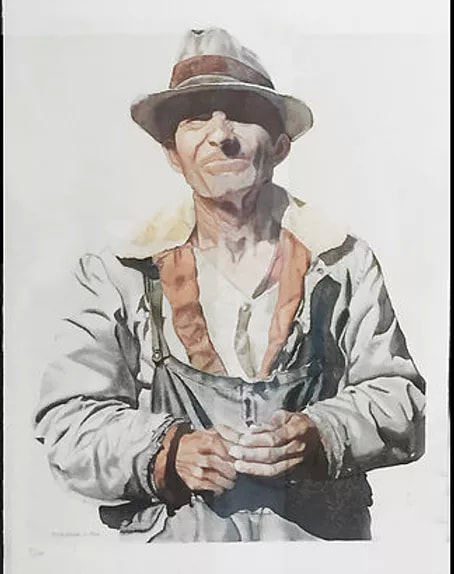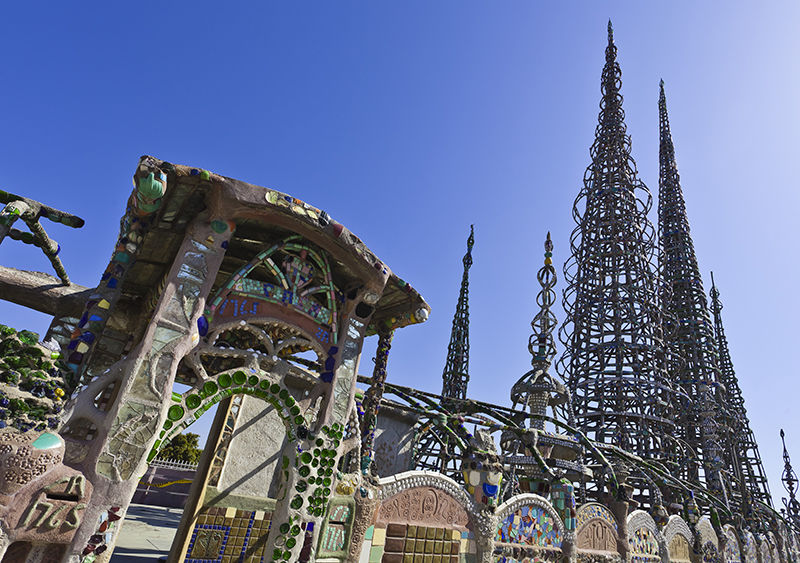Rodia came to America from Italy as a teenager in 1894. He moved to Watts in 1921 at age 42 and began creating the world’s largest single construction ever created by a single person. The Watts Towers are seventeen major sculptures “constructed of a structural steel core, wrapped in wire mesh which has been covered with mortar, and inlaid with tile, glass, shell, pottery, and rocks. Set in only a fourteen-inch foundation, the tallest of the towers is ninety-nine and a half feet tall.” If that is not impressive enough, “there is no welded inner armature. Rodia wired rebars together then wrapped this joint with wire mesh and hand packed it with mortar and his mosaic surface.” “Although he lacked formal schooling, Rodia's years as a laborer and his natural ingenuity led him to develop a unique method for building his dream structure on a limited budget and with few tools. He bent salvaged steel into the shapes he desired, wrapped wire mesh around it and covered it with thin layers of cement mortar. Since Rodia didn't have scaffolding, he laid out most of the elements he needed on the ground, carried them up in buckets along with his tools and assembled them in place. As he worked, he was anchored only by a window-washer's belt and buckle.” When the 1921 west tower was completed, it contained the longest reinforced concrete columns in the world upon “an important record in the history of architecture. The stability of the entire monument is ensured by its innovative architectural design embodying universal structural principles found in nature.” In 1959, the International Conference of Museum Curators resolved that “Rodia’s Towers are a unique combination of sculpture and architecture and the paramount work of folk art of the 20th century in the United States.” In the sculpture you will find the soul of California built into it. There’s bits and pieces of California pottery makers, as well as from well-know tile maker Batchelder and dishware from Fiesta, Harlequin and probably Bauer and Metlox. “All of these were local companies who helped shape the colorful, functional Craftsman aesthetic.”
Elina Shatkin, whose article on Discover Los Angeles I got a lot of this wonderful history from, writes, “The Watts Towers are exemplars of folk art and outsider art, terms for unclassifiable works of great originality or beauty created by the disenfranchised.” Towering towards the heaven, this integrated series of artistic vision and passion combines all the artistic elements of sculpture and architecture, but is also “an unparalleled example of an art environment constructed by a single, self-taught artist.” Once the art world recognized this great accomplishment in 1959, “the site has become the focus of cultural and aesthetic movements addressing issues of social and economic justice. To this day, the Watts Towers serve as a symbol of freedom, creativity, and initiative for the local African-American and Latino community and beyond.” Today, The Watts Towers attract over 40,000 visitors yearly from across the nation and around the world including artists, poets, musicians, architects and social and cultural historians. Some interesting folks include the great jazz musician Charles Mingus who grew up in the shadows of the towers. You can also find pictures of it on album covers by Harold Land, Don Cherry and Tyrese. In fact, Rodia himself is next to Bob Dylan on the cover of The Beatles' Sgt. Pepper's Lonely Hearts Club Band.
0 Comments
Leave a Reply. |
Ian MacdonaldAn ex-copywriter turned punk rock pastor and peacemaker who dedicates his life to making the world a better place for all humanity. "that they all might be one" ~John 17:21“Prius vita quam doctrina.”
~ St. Thomas Aquinas (1225–1274) * “Life is more important than doctrine.”
Archives
June 2024
|
